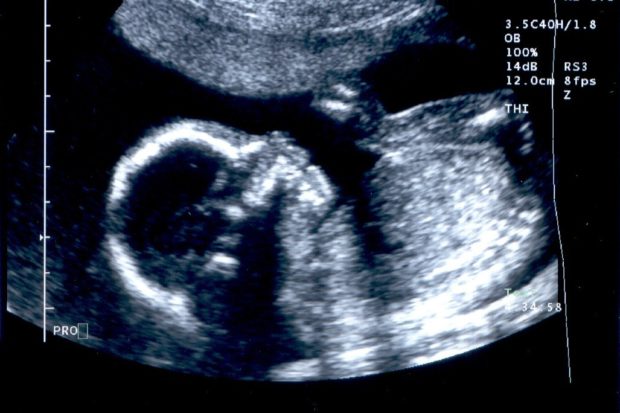
During 2014, there were 150 days in the San Joaquin Valley when monitors recorded air pollution levels that were either “unhealthy for sensitive groups” or worse. These are the Orange days on the air quality chart. The public should understand the extent of these sensitive groups in order to protect themselves or family members from the health effects of the Valley’s worst-in-the-nation air pollution. Some may think these sensitive groups are just a small fraction of the population and that it does not harm too many people unless pollution levels are in the Red zone. The facts show a more serious problem.
Different states and countries often decide their own definition of who is part of a sensitive group. Here are a few examples:
- Sensitive groups, according to the Environmental Protection Agency kid’s page, include people with lung disease such as asthma, plus kids and grownups who are active outside. They are advised to limit how long or how hard they play or work on Orange days.
- China seems to downplay the Orange days by saying slight irritations might occur and individuals with breathing or heart problems should reduce outdoor exercise.
- Canada gives a lot of detail by saying people who have existing respiratory illnesses such as asthma, chronic obstructive pulmonary disease, heart disease, lung cancer and those with diabetes are sensitive to air pollution. Young children are included because on a per-body-weight basis they tend to inhale relatively more air than adults plus they have elevated metabolic rates and younger defense systems.
- The elderly are more likely to be affected due to generally weaker lungs and hearts or undiagnosed respiratory or cardiovascular health conditions. People participating in sports or strenuous work outdoors breathe more deeply and rapidly allowing more air pollution to enter the lungs.
So, in the San Joaquin Valley, how many people should be included using the clearly stated Canadian description, which also follows general U.S. guidelines? What percent of the population is sensitive to the lower levels of air pollution so common in this area?
- According to official Census reports, 27% of the population is 16 years or younger and should be considered sensitive as growing and active children. Of course, we also know 20%– 30% of these children have asthma, which increases their sensitivity.
- A full 10% of the population is 65 years of age or older and belongs in the elderly group. Many of them also have cardiovascular problems or asthma, etc., making them even more sensitive.
- About 15% of the population works strenuously outside as farm and construction workers. For those working indoors, some have asthma and others have diabetes and their total numbers amount to 20% of the population.
There is no double counting in the above figures, which gives a total percentage of people sensitive to air pollution at above 70%. There are other conditions for middle-age adults that would add to these numbers such as indoor workers who are overweight.
The fact is, around 3 million people living in the San Joaquin Valley should be considered sensitive to these lower levels of air pollution. This is according to scientists and doctors. The San Joaquin Valley Air Pollution Control District does not dispute these facts, but they are never heard publicly discussing these kinds of numbers either. To tell the truth, it makes them look bad.
One group of important people not mentioned in the above figures is pregnant women. There are around 60,000 births in the San Joaquin Valley each year. This many births represent a large group of pregnant women and the effects of air pollution on pregnancy are extremely serious but often overlooked. The unborn child is most affected.
Study after study has linked air pollution during pregnancy with negative health effects on the baby and the mother. The most noticeable effects are premature birth or low birth weight. Counties like Fresno and Kern have the highest rates in California for these types of pregnancy outcomes and air pollution is clearly the cause. A study in Los Angeles directly linked ammonium nitrate pollution, which is predominant in our winter air, to higher rates of premature birth.
Other negative effects include gestational diabetes in the mother and greater autism rates in children whose mothers were exposed to air pollution during pregnancy. In general, the effects of air pollution on pregnancy are similar to the health effects on pregnant women who smoke. This is shocking stuff. It definitely indicates a need for stronger action from the San Joaquin Valley Air Pollution Control District to reduce air pollution.
The greatest health improvements for all of these sensitive groups will come from reductions in fine particulate matter. The Valley has seen increasing levels of this type of pollution the past couple years. Reducing all the sources of this pollution rapidly is absolutely necessary. This includes ammonia from dairies and nitrogen oxide (NOx) emissions from combustion of fuel. Around three-fourths of our population has a huge stake in seeing this happen. Unborn children are perhaps the greatest at risk.
*****
Longtime clean air advocate Tom Frantz is a retired math teacher and Kern County almond farmer. A founding member of the Central Valley Air Quality Coalition, he serves on the CVAQ steering committee and as president of the Association of Irritated Residents. CVAQ is a partnership of more than 70 community, medical, public health, environmental and environmental justice organizations representing thousands of residents in the San Joaquin Valley unified in their commitment to improve the health of Californians. For more information, visit www.calcleanair.org.
